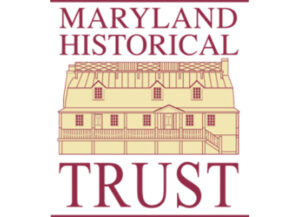 Maryland’s 13 heritage areas, funded through the Maryland Department of Planning (Planning) and overseen by the Maryland Heritage Area Authority (MHAA) generated a total impact on the state’s economy of more than $2.4 billion in FY19, according to an economic contribution analysis released today. The study further concluded that the economic activity of MHAA supported or sustained 33,815 jobs throughout the state.
Maryland’s 13 heritage areas, funded through the Maryland Department of Planning (Planning) and overseen by the Maryland Heritage Area Authority (MHAA) generated a total impact on the state’s economy of more than $2.4 billion in FY19, according to an economic contribution analysis released today. The study further concluded that the economic activity of MHAA supported or sustained 33,815 jobs throughout the state.
“Maryland’s investment in MHAA is generating a valuable economic impact on the region and helping support the development of livable communities across the state,” said Governor Larry Hogan. “Through our rich network of heritage organizations, we are able to connect visitors – and Marylanders – to the stories and places that helped compose and conserve the Maryland experience.”
The study, which analyzed FY19, is a strong indicator of the need for ongoing investment in heritage tourism in a post-COVID landscape. The study measured the economic contribution of MHAA, 13 Certified Heritage Areas, and heritage tourism, and provides individual impact analyses of the state’s certified heritage areas.
“Maryland’s heritage areas are giving a voice to the stories of small communities that have made an enormous cultural, environmental, and historical impact on Maryland,” said Robert S. McCord, Esq., Maryland Secretary of Planning and Chair of MHAA. “The report is evidence that the Maryland Heritage Areas program is generating significant economic energy, while serving as an invaluable conduit to Maryland’s diverse history.”
“Economic impact analysis is an objective way to measure the significance of MHAA’s programmatic approach and heritage tourism in the statewide economy,” said Nichole Parker, co-Founder and President of Parker Philips, the consultant that performed the study. “It is a reliable tool that policymakers can use to inform their decisions and empirical context that shows relative value. MHAA, the 13 heritage areas, and heritage tourism are sustainable economic drivers that make a demonstrable impact on Maryland. Dollars invested in growing heritage tourism yield economic returns for Maryland while celebrating its unique history, culture, and environmental assets. Simply stated, heritage areas make an impact.”
Among the findings in the study:
- The $2.4 billion total economic impact of the programs in FY19, which included $1.4 billion direct and $1.0 billion indirect and induced spending, was the result of operational spending, capital spending, payroll and benefits paid to employees, student spending, and visitor spending.
- The employment impact of MHAA and 13 Certified Heritage Areas supported or sustained a total of 33,815 jobs.
- Through its local spending and the jobs it supported or sustained, MHAA and heritage tourism generated $319.8 million in state and local taxes.
- The FY19 $6 million allocation to MHAA allows the work of building heritage tourism to grow value and recognition across the state and nation. MHAA and the 13 Certified Heritage Areas leverage this funding to generate a $2.3 billion program and heritage tourism impact.
The full economic contribution analysis is available at https://bit.ly/mhaaimpact


